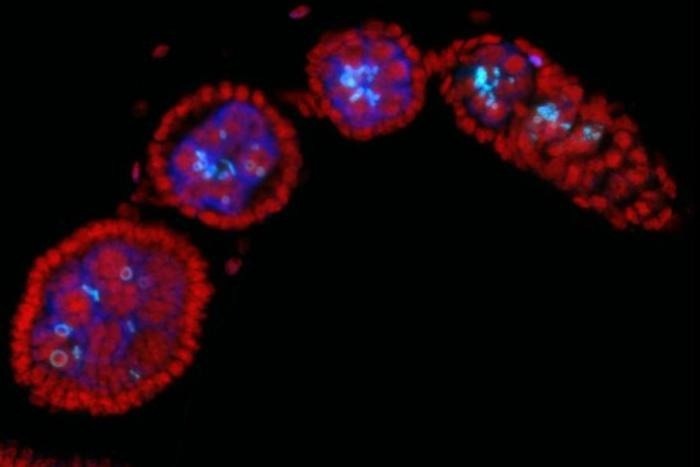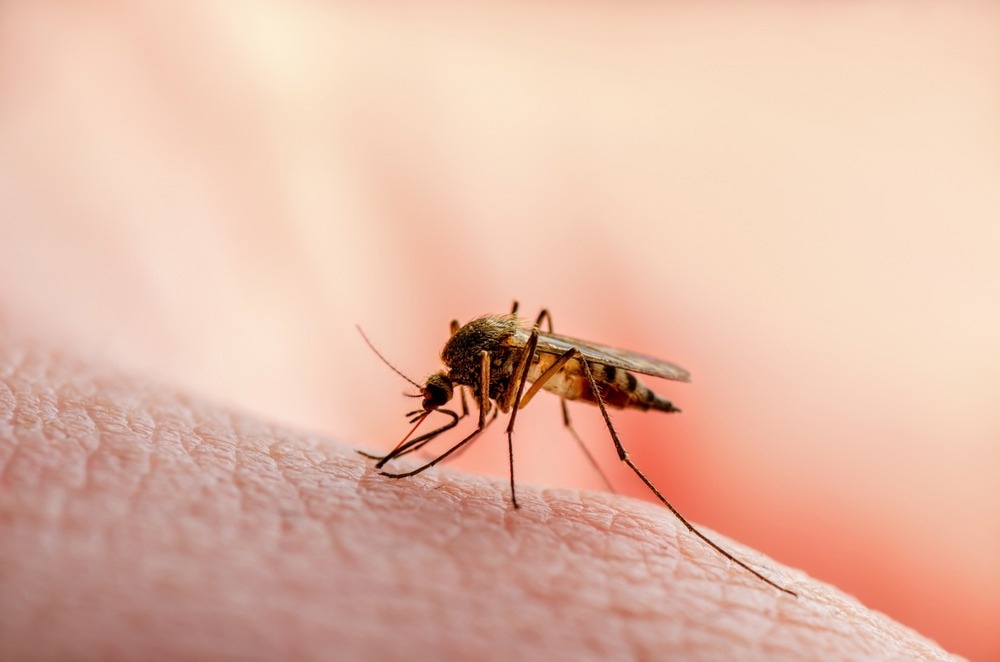Reviewed by Danielle Ellis, B.Sc.Oct 25 2023
A recent investigation uncovers the biological processes through which a particular bacteria strain belonging to the Wolbachia genus may boost the reproductive capabilities of the insects it invades.
 A mei-P26 mutant Drosophila melanogaster ovariole infected with wMel bacterial symbionts. DNA is stained in red, anti-Vasa protein is stained blue, and anti-Hu-li tai shao ring canal protein is stained cyan.
A mei-P26 mutant Drosophila melanogaster ovariole infected with wMel bacterial symbionts. DNA is stained in red, anti-Vasa protein is stained blue, and anti-Hu-li tai shao ring canal protein is stained cyan.
This discovery holds significant potential for influencing strategies aimed at controlling mosquitoes.
Shelbi Russell and her research team from the University of California Santa Cruz, United States, published their discoveries in the freely accessible journal PLOS Biology.
Various variants of Wolbachia bacteria naturally inhabit a wide array of animals across the globe, including mosquitoes, butterflies, and fruit flies.

Image Credit: nechaevkon/Shutterstock.com
These Wolbachia strains have the capacity to influence the reproductive capabilities of their host organisms by employing specific biological mechanisms that facilitate the proliferation of Wolbachia within host populations.
The study was published in the open access journal PLOS Biology on October 24, 2023.
In recent times, individuals have harnessed this mechanism in deliberate mosquito infection strategies using a particular Wolbachia strain. These efforts aim to decrease specific mosquito populations, potentially curbing the transmission of human viruses, like dengue or Zika, carried by mosquitoes.
Research conducted in fruit flies indicates that the identical strain, naturally occurring in fruit flies, might also have the capacity to boost insect fertility. This discovery carries significant implications for mosquito control strategies.
The available evidence indicates that the enhanced fertility may be linked to biological mechanisms related to the fruit fly protein known as meiotic-P26 (mei-P26), which plays a crucial role in fruit fly reproduction. Nevertheless, the exact details of these mechanisms remain unclear.
To gain deep insights, Russell and her colleagues selectively bred fruit flies with diverse mei-P26-related deficiencies, leading to decreased fertility in the fruit flies. Subsequently, they investigated the consequences when these flies were infected with the Wolbachia strain native to fruit flies.
Their findings demonstrated that Wolbachia infection effectively rejuvenated the fertility of the fruit flies exhibiting a range of mei-P26 deficiencies, allowing them to produce a greater number of offspring compared to their uninfected counterparts.
Further experiments unveiled the mechanism through which Wolbachia restores fertility, indicating that it alleviates specific disruptions caused by mei-P26 defects on particular genes and proteins. This remedial action resolves issues pertaining to the stem cells responsible for generating eggs and sperm in fruit flies.
In supplementary trials, Wolbachia infection demonstrated a fertility boost in fruit flies devoid of mei-P26 defects, leading to elevated rates of egg laying and hatching.
These revelations offer insight into the previously enigmatic mechanisms behind the enhanced fertility brought about by this specific Wolbachia strain in fruit flies. Further investigations are imperative to gain a deeper understanding of these effects and to assess their potential significance for strategies utilizing this strain in mosquito population control.
Wolbachia endosymbionts exist at high infection frequencies in many host populations, despite exhibiting weak gene drive systems and unobserved impacts on host fitness. Here, we show that the wMel strain of Wolbachia is able to rescue and reinforce host fertility, demonstrating their capacity to function as a beneficial symbiont.”
Shelbi Russell, University of California Santa Cruz
Source:
Journal reference:
Russell, S. L., et al. (2023) Wolbachia endosymbionts manipulate the self-renewal and differentiation of germline stem cells to reinforce fertility of their fruit fly host. PLOS Biology. doi.org/10.1371/journal.pbio.3002335.